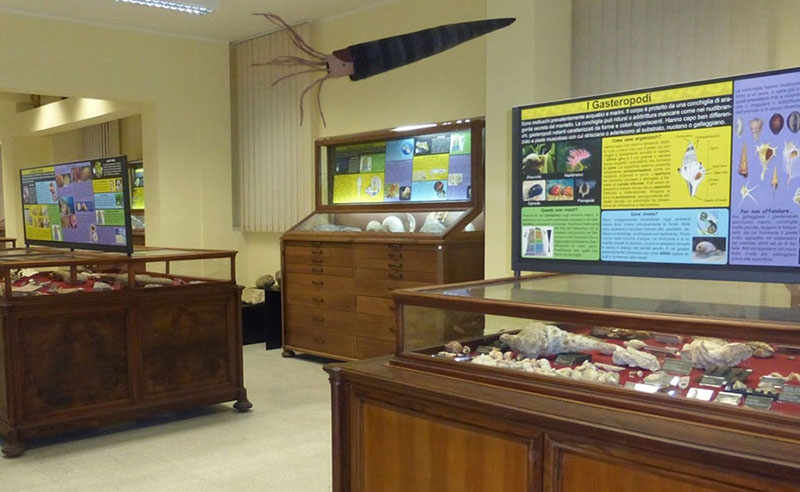Museum of Palaeontology

Scientific coordinator: prof. Antonietta Rosso
The Museum of Paleontology originates from the post-war period. At the time, the geologist and volcanologist Ottorino De Fiore resolved to rearrange the fossil collection of Baron Bonaventura Gravina and Sir Viglino. To the historical nucleus of the exhibition (comprising collections from Biscari, Gioeni, Maravigna, Aradas, Alessi and Gemmellaro, still partially recognisable up until today), further purchases, donations and finds were adjoined at a later time thanks to some research studies carried out by local palaeontologists.
From a scientific standpoint, it is an interesting collection from the contemporary period exhibiting fossils and other finds from the Mediterranean, south-east Asia, South America, Antarctica and Indian, Pacific and Atlantic oceans illustrating the character of the territory that palaeontology depends upon, (especially the Sicilian character) while providing documentary evidence of palaeoenvironmental differences through a space-time reconstruction. The historical significance of the exhibition resides in some of the most valued artefacts from the past century; rock outcrops that no longer exist because they have disappeared. Unique and indeed very opulent are the collections of those fossils deriving from typical organisms of deep habitats including Sicilian quaternary mammals and the dwarf elephant thereof (Paleoloxodon falconeri).
The great value of all this material is clearly visible across diverse educational contexts, with the opening in 2010 and 2012 of two large exhibition halls, one of them devoted to flowers and vertebrates, and particularly to continental ones, whereas, the other is all about marine invertebrates and the evolution of the Mediterranean, through fossils, most of all Sicilian.
A series of display panels guide the visitor inside the Museum, providing important insights into diverse anatomical aspects and the lifestyle of the organisms on display along with their respective paleoenvironmental reconstruction. As for the invertebrates, information on the organization of different groups is also provided. Our curiosity is all but dead in terms of any practical use of these organisms and fossils in our daily life (from the kitchen, to jewellery, art and architecture).
Information and Admission
Temporarily closed to the public
[By reservation / tel. +39 095 7195763 / mst@unict.it / video]